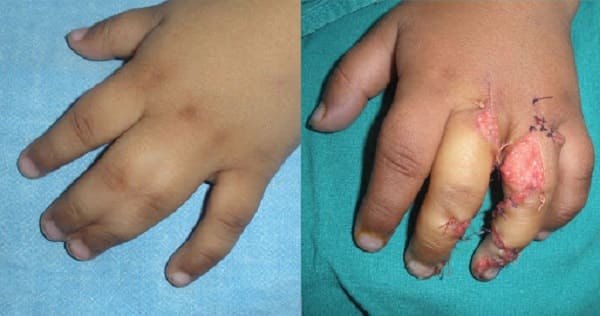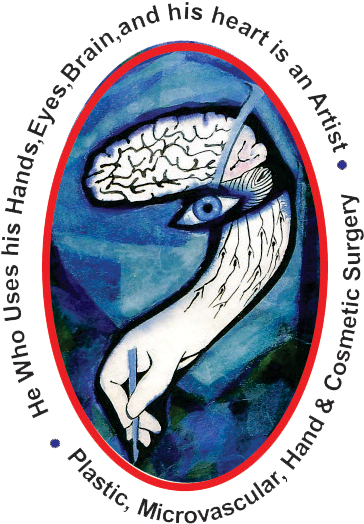Congenital
Symptoms of Congenital Hand Differences
Congenital hand differences are usually noticeable at or shortly after birth, and are not correlated with a known injury. These may include:
- Extra fingers or thumb (polydactyly)
- Fused fingers or thumb (syndactyly). This is the most common congenital hand difference.
- Absent fingers or thumb
- Hand deformity
- Short forearm
- Stiffness or contracture in hand, wrist, or elbow, which is caused by a shortening, thickening, and/or excess of connective tissue
- With hand contractures, skin changes or infections may occur if the fingers are significantly contracted into the palm
Questions? We got Answers!
Depending on the complexity of the condition, patients may visit with more than one physician, surgeon, therapist or physician assistant. Consultations usually last 1-2 hours. During this important visit, parents or guardians should expect to assist their child with the following:
- Undergo a physical examination and provide a complete medical history, including information about previous surgical procedures, past and present medical conditions, and any current medications or herbal supplements.
- Discuss possible options for treatment of the condition, including whether surgery is recommended. If surgery is recommended, the surgical procedure will be discussed in detail, including the possible risks and complications of the procedure, recovery and rehabilitation period, and the probable outcome in terms of function and appearance.
In addition to an initial consultation appointment, additional diagnostic imaging tests may be ordered. These include:
- X-ray: Images used to evaluate bones for deformity.
- CT Scan: For more detailed imaging.
We offer the latest treatment options available for patients with congenital hand differences, both non-surgical and surgical. Treatment is decided on a case-by-case basis, and depends on the location and severity of the congenital hand difference.
- Non-surgical. Depending on the condition, a period of watchful waiting may be the appropriate therapy, monitoring with office visits and X-rays. Splinting and Occupational Therapy may also be appropriate, depending on the diagnosis.
- Surgery. The goal of surgical treatment is to restore as much function to the affected area as possible. Surgical treatment is decided on a case-by-case basis. Specific procedures depend on the type of condition and the timing of the surgery as some conditions are best treated before the baby grows too much.
- Hand Therapy and Rehabilitation. Hand therapy is provided on site at the University of Michigan’s Hand Program by our team of occupational and physical therapists under the direction of a trained hand therapist. Referrals to local providers can be arranged closer to home as a more convenient option for patients.



